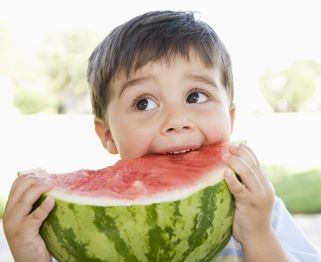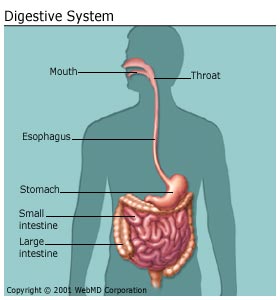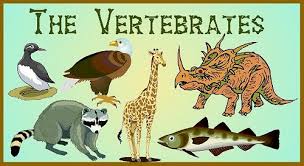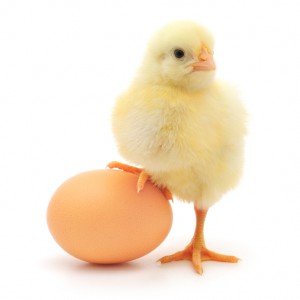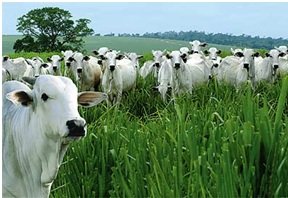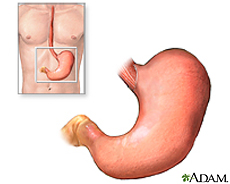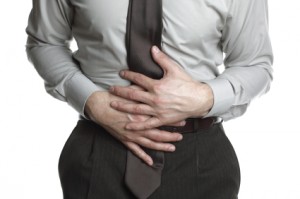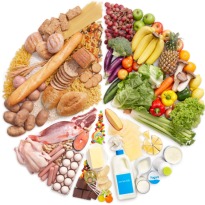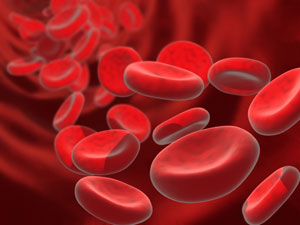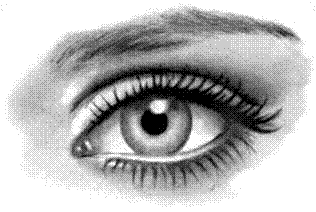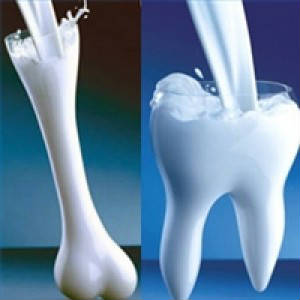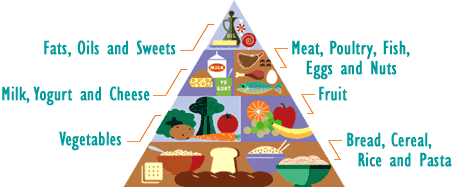Quiz On Digestive System & Nutrient Deficiency

A 20-point quiz. Learn & Enjoy!
- 1.
A function of the digestive system in which food is broken down into small molecules and absorbed into the body
- A.
Defecation
- B.
Digestion
- C.
Propulsion
- D.
Secretion
Correct Answer
B. DigestionExplanation
Digestion is the correct answer because it accurately describes the process in which food is broken down into small molecules and absorbed into the body. This process occurs in the digestive system and involves the mechanical and chemical breakdown of food in order to extract nutrients and energy.Rate this question:
-
- 2.
Movement of food along the digestive tract is called __________.
- A.
Absorption
- B.
Ingestion
- C.
Propulsion
- D.
Secretion
Correct Answer
C. PropulsionExplanation
Propulsion refers to the movement of food along the digestive tract. This process involves the contraction and relaxation of muscles in the digestive system, which helps to push food forward. Absorption refers to the process of nutrients being taken up by the body, ingestion refers to the intake of food into the mouth, and secretion refers to the release of digestive enzymes and other substances into the digestive tract.Rate this question:
-
- 3.
Accessory organs of the digestive system include the following except
- A.
Liver
- B.
Pancreas
- C.
Stomach
- D.
Teeth
Correct Answer
C. StomachExplanation
The stomach is not considered an accessory organ of the digestive system because it is a primary organ involved in the process of digestion. The accessory organs, on the other hand, play a supporting role in digestion. The liver produces bile, which helps in the breakdown and absorption of fats. The pancreas produces digestive enzymes that aid in the breakdown of carbohydrates, proteins, and fats. Teeth, although not commonly thought of as organs, are essential for the mechanical breakdown of food through chewing.Rate this question:
-
- 4.
An organ which secretes bile and acts as storage of nutrients
- A.
Esophagus
- B.
Liver
- C.
Stomach
- D.
Tongue
Correct Answer
B. LiverExplanation
The liver is an organ that secretes bile, which is important for the digestion and absorption of fats. It also acts as a storage site for nutrients such as vitamins and minerals. The liver plays a crucial role in detoxification, metabolism, and regulation of various substances in the body. It is located in the upper right side of the abdomen and is one of the largest organs in the body.Rate this question:
-
- 5.
Bile plays an important role in the digestion of __________.
- A.
Carbohydrates
- B.
Lipids
- C.
Nucleic acids
- D.
Proteins
Correct Answer
B. LipidsExplanation
Bile plays an important role in the digestion of lipids. Bile is produced by the liver and stored in the gallbladder. It is released into the small intestine during digestion to aid in the breakdown and absorption of dietary fats. Bile emulsifies the large fat molecules into smaller droplets, increasing their surface area and making it easier for enzymes called lipases to break them down into fatty acids and glycerol. This allows for better absorption of lipids in the intestines. Therefore, the correct answer is lipids.Rate this question:
-
- 6.
An organ which receives waste materials from the large intestine and holds it until it is evacuated
- A.
Pancreas
- B.
Rectum
- C.
Small intestine
- D.
Stomach
Correct Answer
B. RectumExplanation
The rectum is an organ that receives waste materials from the large intestine and holds them until they are ready to be evacuated from the body. It serves as a temporary storage area for feces before they are eliminated through the anus. The rectum is located at the end of the digestive tract and plays a crucial role in the process of waste elimination.Rate this question:
-
- 7.
Type of digestive system in which there is only a single opening for the ingestion of food
- A.
Single digestive system
- B.
Complete digestive system
- C.
Multiple digestive system
- D.
Incomplete digestive system
Correct Answer
D. Incomplete digestive systemExplanation
An incomplete digestive system refers to a type of digestive system in which there is only a single opening for the ingestion of food. In this system, food enters and exits through the same opening, which is usually the mouth. This type of digestive system is found in certain organisms such as jellyfish and flatworms, where digestion occurs in a simple cavity with no specialized organs or structures. The food is broken down and absorbed directly into the body cells without passing through a dedicated digestive tract.Rate this question:
-
- 8.
In the digestive system of frogs, cloaca has the following function.
- A.
Absorption of nutrients to be transmitted in the blood
- B.
Passage of food from the mouth
- C.
Secretion of enzymes used in digestion
- D.
Storage for solid wastes from the large intestine
Correct Answer
D. Storage for solid wastes from the large intestineExplanation
The cloaca in the digestive system of frogs serves as a storage for solid wastes from the large intestine. The large intestine absorbs water from the undigested food, forming solid waste material. This waste material is then stored in the cloaca until it is eliminated from the body through the cloacal opening.Rate this question:
-
- 9.
Type of digestive system that arthropods and chordates exhibit
- A.
Single digestive system
- B.
Complete digestive system
- C.
Multiple digestive system
- D.
Incomplete digestive system
Correct Answer
B. Complete digestive systemExplanation
Arthropods and chordates exhibit a complete digestive system. This means that they have a separate mouth and anus, allowing for the ingestion and elimination of food. The food travels through various organs such as the esophagus, stomach, and intestines, where it is broken down and nutrients are absorbed. This type of digestive system allows for efficient digestion and absorption of nutrients, as well as the elimination of waste products.Rate this question:
-
- 10.
A digestive system found in poultry
- A.
Avian digestive system
- B.
Monogastric digestive system
- C.
Ruminant digestive system
- D.
Pseudo-ruminant digestive system
Correct Answer
A. Avian digestive systemExplanation
The avian digestive system refers to the digestive system found in birds. It is different from other digestive systems mentioned in the options because birds have a unique anatomy and physiology that allows them to efficiently digest their food. Birds have a crop, which is a specialized pouch where food is stored and softened before entering the stomach. They also have a gizzard, a muscular organ that helps grind food since birds do not have teeth. The avian digestive system is adapted for the consumption of grains and seeds, as well as insects and small animals.Rate this question:
-
- 11.
A digestive system that has a large stomach divided into four compartments and found in cattle, sheep and goat
- A.
Avian digestive system
- B.
Monogastric digestive system
- C.
Ruminant digestive system
- D.
Pseudo-ruminant digestive system
Correct Answer
C. Ruminant digestive systemExplanation
The ruminant digestive system is characterized by a large stomach divided into four compartments, namely the rumen, reticulum, omasum, and abomasum. This type of digestive system is found in cattle, sheep, and goats. Ruminants have a unique ability to ferment plant material in their rumen, which allows them to extract nutrients from cellulose. The fermentation process is facilitated by microorganisms present in the rumen. The other options, avian digestive system, monogastric digestive system, and pseudo-ruminant digestive system, do not match the description given in the question.Rate this question:
-
- 12.
Function of pepsin as an enzyme in the stomach
- A.
Breaks protein into small peptides
- B.
Converts nucleic acids to nucleotides and nucleosides
- C.
Converts starch to simple soluble sugars
- D.
Degrades butter fat
Correct Answer
A. Breaks protein into small peptidesExplanation
Pepsin is an enzyme found in the stomach that plays a crucial role in the digestion of proteins. It functions by breaking down proteins into smaller peptides, which are easier to absorb and utilize by the body. This process is essential for the body to obtain the necessary amino acids for various physiological functions. Therefore, the function of pepsin as an enzyme in the stomach is to break proteins into small peptides.Rate this question:
-
- 13.
Ulcer is caused by bacterial infections or adverse side effects of medication that damages __________.
- A.
Salivary glands
- B.
Lining of the stomach
- C.
Muscles in the intestines
- D.
Esophagus
Correct Answer
B. Lining of the stomachExplanation
Ulcers are caused by bacterial infections or adverse side effects of medication that damage the lining of the stomach. The lining of the stomach is made up of a layer of cells that protect the stomach from the acid and digestive enzymes it produces. When this lining is damaged, it can lead to the formation of ulcers. Bacterial infections, such as Helicobacter pylori, can weaken the lining and make it more susceptible to damage. Additionally, certain medications, such as nonsteroidal anti-inflammatory drugs (NSAIDs), can also cause damage to the stomach lining and increase the risk of developing ulcers.Rate this question:
-
- 14.
Results in stomach acid backing up into the esophagus creating a burning sensation or sour taste in the mouth
- A.
Celiac disease
- B.
Diverticulitis
- C.
Heartburn
- D.
Irritable Bowel Syndrome
Correct Answer
C. HeartburnExplanation
Heartburn is the correct answer because it is characterized by stomach acid flowing back into the esophagus, causing a burning sensation or sour taste in the mouth. This condition is commonly associated with the consumption of certain foods, such as spicy or fatty foods, and can be triggered by lying down or bending over after eating. Heartburn is not a disease itself, but rather a symptom of acid reflux or gastroesophageal reflux disease (GERD). Treatment options for heartburn include lifestyle changes, over-the-counter medications, and in severe cases, prescription medications or surgery.Rate this question:
-
- 15.
Occurs when the body does not absorb the necessary amount of nutrients which can lead to a variety of health problems
- A.
Digestive diseases
- B.
Nutrient absorption
- C.
Digestive malfunction
- D.
Nutrient deficiency
Correct Answer
D. Nutrient deficiencyExplanation
Nutrient deficiency occurs when the body is unable to absorb the necessary amount of nutrients, leading to a variety of health problems. This can happen due to digestive diseases or digestive malfunction, which hinder the absorption process. When the body lacks essential nutrients, it can result in various deficiencies, such as vitamin or mineral deficiencies, causing adverse effects on overall health.Rate this question:
-
- 16.
An element in the body needed to make red blood cells
- A.
Calcium
- B.
Fluorine
- C.
Iron
- D.
Potassium
Correct Answer
C. IronExplanation
Iron is needed to make red blood cells. Iron is a crucial component of hemoglobin, the protein in red blood cells that carries oxygen from the lungs to the rest of the body. Without sufficient iron, the body cannot produce enough healthy red blood cells, leading to a condition called iron deficiency anemia. Iron is therefore an essential element for the production and function of red blood cells in the body.Rate this question:
-
- 17.
Nutrient needed for eye health and functioning as well as for strengthening the immune system against infection
- A.
Vitamin D
- B.
Niacin
- C.
Vitamin A
- D.
Folate
Correct Answer
C. Vitamin AExplanation
Vitamin A is the correct answer because it is a nutrient that is essential for maintaining eye health and functioning. It plays a crucial role in the formation of a pigment called rhodopsin, which is necessary for good vision, especially in low light conditions. Additionally, vitamin A helps in strengthening the immune system, making it more effective in fighting off infections. It is also involved in the growth and development of cells and tissues in the body.Rate this question:
-
- 18.
An element in the body needed to develop strong bones and teeth
- A.
Oxygen
- B.
Manganese
- C.
Iron
- D.
Calcium
Correct Answer
D. CalciumExplanation
Calcium is needed in the body to develop strong bones and teeth. It is an essential mineral that plays a crucial role in bone formation and maintenance. Calcium helps in the growth and development of bones, making them strong and healthy. It also aids in teeth formation and maintaining their strength. Without sufficient calcium intake, bones can become weak and brittle, leading to conditions like osteoporosis. Hence, calcium is the correct answer as it is the element required for the development of strong bones and teeth.Rate this question:
-
- 19.
Rice and bread are good sources of __________.
- A.
Vitamins and minerals
- B.
Proteins
- C.
Fats and oils
- D.
Carbohydrates
Correct Answer
D. CarbohydratesExplanation
Rice and bread are good sources of carbohydrates. Carbohydrates are the main source of energy for the body and are essential for proper brain function and physical activity. They are broken down into glucose, which is used by the body as fuel. Rice and bread are both high in carbohydrates, making them a staple in many diets around the world. They provide a quick and easily digestible source of energy, making them important for athletes and individuals with high energy demands.Rate this question:
-
- 20.
The following are the significance of knowing the food pyramid except
- A.
Provides dietary guidance
- B.
Helps improve eating habits
- C.
Explains eating disorders and their treatments
- D.
Acts as reminder in getting the recommended food daily requirements
Correct Answer
C. Explains eating disorders and their treatmentsExplanation
The correct answer is "Explains eating disorders and their treatments". The food pyramid provides dietary guidance by illustrating the recommended daily intake of different food groups. It helps improve eating habits by promoting a balanced and nutritious diet. It also acts as a reminder to meet the recommended food requirements. However, the food pyramid does not specifically explain eating disorders and their treatments. Eating disorders are complex mental health conditions that require specialized treatment and support.Rate this question:
-
Quiz Review Timeline +
Our quizzes are rigorously reviewed, monitored and continuously updated by our expert board to maintain accuracy, relevance, and timeliness.
-
Current Version
-
Mar 21, 2023Quiz Edited by
ProProfs Editorial Team -
Apr 28, 2016Quiz Created by
Christian Eslao
 Back to top
Back to top



